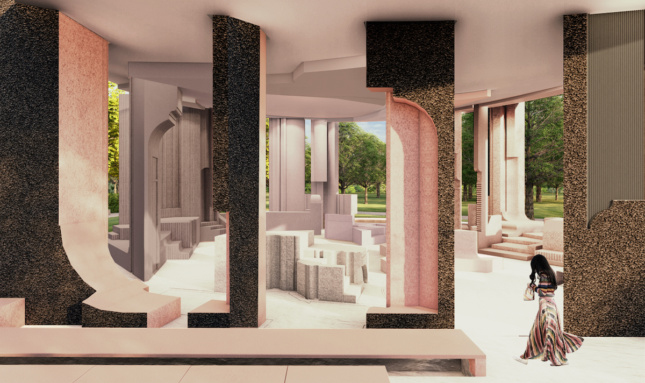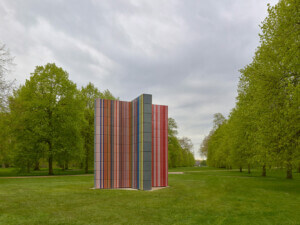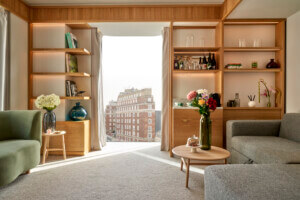An all-female team from Johannesburg, South Africa, has been selected to design the 2020 Serpentine Pavilion. The 29-years-old architects Sumayya Vally, Sarah de Villiers, and Amina Kaskar of Counterspace are also the youngest designers ever selected to create the annual summer installation in Kensington Gardens, London.
According to The Guardian, the architects envisioned the pavilion as a series of spaces “inspired by places where people gather across London, particularly migrant and other peripheral communities.” The trio wrote in a statement that “places of memory and care” in parts of the city—from Brixton to Hackney, Whitechapel, Ealing, and more—will come together in a singular shelter within Kensington Gardens.
“Where they intersect, they produce spaces to be together,” said Vally, who co-founded the firm in 2015.

The pavilion will be comprised of different sections, each representing various existing gathering spaces throughout London. Visitors will be able to see these distinctions through structural breaks, gradient changes, and differences in color and texture, according to the architects. “As an object, experienced through movement,” said Vally, “it has continuity and consistency, but difference and variation are embedded into the essential gesture at every turn.”
Counterspaces’ pavilion will be built in waves. The completed sections will be set up in different neighborhoods where they’ll first play host to numerous community events. By the summer, the sections will return to Kensington Gardens and make up the whole structure. Counterspace aims to build the pavilion with earth-friendly materials such as cork and custom K-Briq modules from Kenoteq. Each unfired brick used for the structure will be made with 90 percent recycled construction and demolition waste.

Now in its 20th year, the pop-up Serpentine Pavilion has long-been a space for debate and, as The Guardian puts it, selfies. Design teams that have had the recent honor of producing a temporary structure for the Gallery’s site have attempted to capitalize on the Instagram-age. Architects including Sou Fujimoto, Bjarke Ingels, selgascano, and Frida Escobedo have created stand-out spaces that have attracted thousands of visitors from around the world.
Last year’s selection, however, left the organization mired in controversy. Pavilion designer Junya Ishigami came under fire for not paying his overworked interns on the project. Soon after the news broke, Yana Peel, head of the Serpentine Galleries, resigned from her post. Bettina Korek, former executive director of Frieze Los Angeles, took over thereafter and, alongside artistic director Hans-Ulrich Obrist, chose Counterspace to design this year’s project.
“The idea of working with different communities is very important for us and Counterspace’s proposal does this in a remarkable way,” Obrist said in a statement. “We were totally convinced by the social dimension of their practice. They bring an African perspective, an international perspective, but they are working with locations and communities right here in London and their pavilion design is inspired by that work.”
The 2020 Serpentine Pavilion will go up as part of the institution’s 50th anniversary in London. In a push to produce greener architecture, Serpentine Galleries is now asking its pavilion designers to focus on sustainable construction methods. Additionally, the Gallery’s current events series, the Back to Earth program, explores how architecture can respond to global climate change, promote wellbeing, and rupture social hierarchies.
Counterspace’s pavilion will be open from June 11 through October 11.











